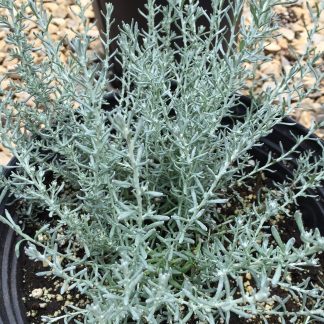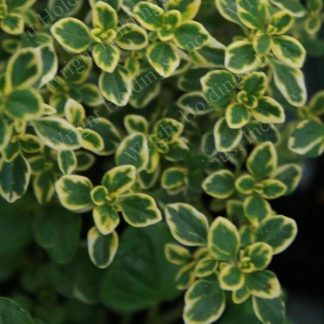Description
Purple Sage (Salvia officinalis ‘Purpurascens’): Bold Flavor Meets Amethyst Foliage
Why We Love Purple Sage
We all want a plant that works hard and looks stunning. Purple Sage does both. The leaves glow in rich purple tones, edged with soft silver. New growth opens deep and velvety. Cooler nights make the color even stronger. In other words, it’s culinary sage with a designer coat.
The flavor is classic and warm. Think savory, piney, and bright. It lifts roasted vegetables, chicken, pork, and sausage. A few leaves turn butter into a rich sauce. Crisped in a pan, they become salty, herbal chips. We use it fresh, dried, or infused. It’s simple. It’s dependable. It tastes like comfort with a fresh twist.
Purple Sage is also tough. It thrives in sun and well-drained soil. It handles heat and dry spells once established. It is evergreen to semi-evergreen in mild winters, then wakes early in spring. Small lavender-blue blooms arrive late spring to summer. Bees adore them. Deer and rabbits usually pass by. That means more herbs for us and more action for pollinators.
The habit is tidy and easy to place. Mounds reach about 18–24 inches tall and wide. Leaves are thick and slightly pebbled, so they hold up in breeze and sun. The plant looks good alone in a pot, in a kitchen bed by the door, or as a color block along a path. Pair it with golden oregano, tricolor sage, purple basil, thyme, chives, or silver artemisia for a layered, modern herb look.
Quick highlights
- Botanical name: Salvia officinalis ‘Purpurascens’ (Purple Sage)
- Type: Woody perennial culinary herb
- Flavor: Savory, piney, warm; stronger than common green sage
- Foliage: Deep purple to plum with silver undertones; color deepens in cool temps
- Bloom: Lavender-blue spikes late spring to summer; pollinator friendly
- Size: 18–24″ tall x 18–24″ wide, naturally mounding
- Light: Full sun (6–8+ hours); light afternoon shade in very hot regions
- Soil: Well-drained, sandy or loamy; low to moderate fertility
- Water: Moderate; drought tolerant once established
- Hardiness: USDA Zones 5–9 (evergreen/semi-evergreen in mild winters)
- Wildlife: Usually deer and rabbit resistant
Why this variety stands out
- Color with purpose: Purple leaves add contrast to green herbs and gray stones.
- Kitchen powerhouse: Holds flavor when sautéed, roasted, or dried.
- Low upkeep: Minimal feeding, light pruning, and smart drainage are enough.
- Season-long interest: Foliage shines before, during, and after bloom.
- Container ready: Compact, architectural, and happy in pots with good drainage.
Planting & Care Made Simple
Set Purple Sage up for success with sun and drainage. That’s the formula. The rest is easy.
Site & soil
Pick a sunny spot with moving air. Work in grit if soil is heavy. Coarse sand, small gravel, or perlite boosts drainage in clay. Raised beds are a smart shortcut. For containers, use a high-quality potting mix with added perlite or fine bark. Choose a pot with a drain hole. Terracotta is great for breathability.
Planting
Plant at the same depth as the nursery pot. Space 18–24 inches so air can pass through the mound. In containers, one plant in a 10–14 inch pot fills in beautifully. Tuck trailing thyme or compact oregano at the edge for a full, layered look. Keep mulch thin and pull it back from the stems to avoid trapped moisture at the crown.
Watering rhythm
Water to establish. Then ease up. Let the top few inches of soil dry before watering again. Deep, occasional watering builds sturdy roots. Constant dampness invites root stress. In heat waves, water early in the day. Containers dry faster, so check them more often, but still allow that brief dry-down.
Feeding
Go light. Sage prefers lean soil. Too much nitrogen makes floppy growth and dulls flavor. Mix in compost at planting, then feed once or twice in spring with a gentle, balanced fertilizer. That’s enough. Strong sun and good drainage do the rest.
Pruning & shaping
After more than the first bloom flush, shear lightly to keep the mound tight. Snip soft tips through summer to encourage branching. Avoid cutting into old, woody stems below green growth. In very early spring, remove winter-damaged tips and shape. A steady, light hand keeps the plant dense and handsome.
Overwintering
In Zones 5–6, provide sharp drainage and a light winter mulch after the ground cools. Do not mulch heavy or wet against the stems. In Zones 7–9, Purple Sage often stays leafy all winter, especially in protected spots. If a cold snap bronzes leaves, wait until spring growth starts, then trim out any tired stems.
Pests & problems
Purple Sage is generally easy. Good airflow and drainage prevent most issues. If you see powdery mildew in muggy weather, thin the center slightly and water at the base, not over the leaves. If leaves yellow while soil is wet, improve drainage and reduce watering frequency. Aphids? A firm spray of water clears them. Healthy plants bounce back fast.
Container tips
Use a gritty mix. Water when the top 2 inches are dry. Rotate the pot every couple of weeks for even light. Repot every 1–2 years in early spring, moving up one size if roots circle. Clip a few stems for the kitchen at each watering. It’s a simple ritual that keeps shape and yields fresh flavor.
Color notes
Purple is most intense in cool weather and on new growth. In peak summer heat, some leaves may show more green. That’s normal. A late-summer trim often brings a fresh flush of rich color for fall.
Companion planting
Sage fits well with rosemary, thyme, oregano, marjoram, chives, lavender, and ornamental grasses. The mix looks clean and smells amazing. Place it near vegetables that like drier soil edges—peppers or eggplants along the bed border, for example—and keep the sage on the lean, sunny side.
Specs at a glance
- Sun: Full
- Water: Low to moderate once established
- Soil pH: ~6.0–7.5, neutral to slightly alkaline is fine
- Spacing: 18–24″
- Bloom window: Late spring to summer
- Maintenance level: Low
Savor, Style, and Share—Your Purple Sage Moment
Purple Sage lifts everyday cooking. A few fresh leaves in brown butter turn simple pasta into a cozy meal. Chopped leaves wake up roasted squash and sweet potatoes. Tucked under chicken skin with lemon, they perfume the whole pan. We also love them as a last-minute finish for white beans, mushroom risotto, and grilled pork. The flavor is warm and heady, so a little goes a long way.
Simple kitchen ideas
- Crispy sage leaves: Fry in a slick of olive oil 10–15 seconds. Sprinkle with salt.
- Sage brown butter: Melt butter, add torn leaves until fragrant, toss with gnocchi.
- Herb salt: Pulse dried sage with flaky salt. Rub on chicken or pork.
- Infusions: Steep in cream for savory sauces, or in vinegar for dressings.
- Roast companion: Add to sheet-pan carrots, onions, and potatoes in the last 10 minutes.
Harvesting
Pick in the morning after dew dries. Snip young, tender shoots just above a pair of leaves. The plant branches from that point and thickens. Avoid taking more than one-third of the plant at a time. Harvest before heavy bloom for boldest flavor, then again after your light post-bloom trim.
Drying & storing
Air-dry small bundles out of direct sun. When crisp, crumble and store in a sealed jar. For fresh use, wrap leaves in a damp paper towel and refrigerate up to a week. You can also freeze whole leaves in a thin layer, then bag them for quick grabbing.
Design ideas
Use Purple Sage as a color anchor. Three plants in a triangle make a strong focal mound. Line a path with alternating Purple Sage and variegated thyme for a soft checkerboard. In containers, pair it with trailing thyme and a pop of color—calendula, violas, or dwarf marigolds at the rim. The purple foliage makes every bloom look brighter.
From one plant to many
This cultivar holds its color best when propagated from cuttings. Take 4–5 inch softwood cuttings in late spring. Strip the lower leaves. Set cuttings in a gritty, moist mix. Keep bright, indirect light. Roots form in a few weeks. You can also layer a low stem by pinning it to the soil until it roots, then snip and pot.
What you’ll receive
A well-rooted, garden-ready Purple Sage plant grown in a nursery pot. Size and fullness vary by season. We ship when weather and inventory allow so your plant arrives strong, settled, and ready to thrive. Plant it the day it arrives, water to establish, and watch the color deepen as the days grow bright and the nights turn crisp.
Everyday care checklist
- Plant in full sun with sharp drainage
- Water deeply, then allow soil to dry a bit
- Feed lightly; avoid rich, soggy soil
- Trim after bloom; never cut into old wood
- Harvest often for best flavor and shape
- Refresh containers with gritty mix as needed
Let’s grow herbs that make life easier and meals better. Purple Sage gives us both. It looks elegant in every season. It stays compact with simple trims. It turns simple dishes into something special. Instead of juggling fussy plants, we can enjoy one that brings color, scent, and flavor—day after day.
Aroma, Color, Comfort—All in Your Hands
Bring home Purple Sage and set it in the sun. Give it lean soil, a gentle soak, and room to breathe. After more than a few weeks, you’ll see why we trust it. The mound stays neat. The leaves stay vivid. The kitchen stays inspired. Grow one near the door, brush it as you pass, and let that warm, herbal note greet you. This is the easy, beautiful herb that loves to work beside us—quietly, reliably, and with a little spark of amethyst every time you look.




